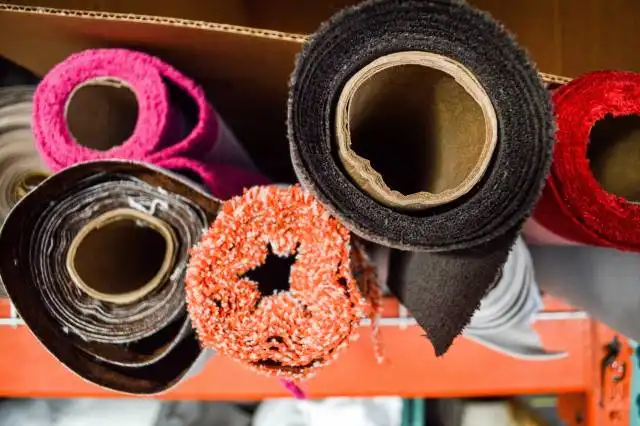Start a Floor Installation Business
Laying the Groundwork for Success with a Floor Installation Business
| Updated


FLOOR INSTALLATION BUSINESS
Venture into a floor installation business, and you'll lay the foundation for success one tile at a time. This type of business specializes in installing a variety of flooring materials from hardwood to laminate, carpets to ceramic tiles. Not only will you help transform dull spaces into dazzling abodes, but you'll also get to flex your muscles in both creativity and physical strength. So tie up your work boots, entrepreneurs; a shiny floor of opportunities awaits your handy skills!
Jump to Business Plan
RELATED BUSINESS IDEAS
Browse ALL Home Improvement & Repair Solutions Business Ideas
Discover Your Perfect Domain
Unlock the door to your online success with our hand-picked selection of premium domain names. Whether you're starting a new venture or rebranding an existing one, the right domain can set the tone for your digital presence. Browse through our curated list, each with its unique potential to enhance your brand's visibility and credibility.
FLOOR INSTALLATION MINI BUSINESS PLAN
This a quick reality check to help you identify the strengths and weaknesses of your business concept before you dive in.
Expected Percent Margins:
- Gross Margin: 30-40%
- Net Profit Margin: 10-15%
Earnings Expectations:
- Daily Earnings: $500 - $1,000 (Based on 1 to 2 jobs per day)
- Weekly Earnings: $2,500 - $5,000
- Monthly Earnings: $10,000 - $20,000
- Annual Earnings: $120,000 - $240,000
Actions Needed to Achieve Those Numbers:
Networking and Business Relationships:
- Partnerships with Contractors: Build relationships with local contractors for steady job referrals.
- Realtor Relationships: Network with real estate agents who can connect you with new homeowners.
Marketing and Customer Acquisition:
- Digital Presence: Develop a professional website and engage on social media platforms.
- Local Advertising: Spend at least $500-$1,000 on local ads, flyers, or online marketing per month.
Sales and Customer Experience:
- Expert Team: Hire skilled laborers and ensure they are well trained in customer service.
- Quality Materials: Work with good providers and choose high-quality materials for your installation.
Pricing and Cost Control:
- Competitive Pricing: Price your services competitively while maintaining a healthy margin.
- Efficient Operations: Invest in efficient tools and technology to speed up installations and reduce labor hours.
Business Operations:
- Quick Turnaround: Aim to complete each installation efficiently without compromising quality.
- Customer Satisfaction: Ensure every customer is satisfied with the service provided, encouraging referrals and repeat business.
Remember, these figures are just estimates and can fluctely widely based on local market conditions, level of expertise, and competitive landscape. Always conduct thorough market research and financial analysis before launching your business.
NOT WHAT YOU HAD IN MIND? Here are more ideas



Browse ALL Home Improvement & Repair Solutions Business Ideas
Grab Your Business Website Name
Before you get caught up in the whirlwind of setting up your business, invest in a domain name. It's a small but significant step that lays the foundation for your brand and makes it easier for customers to find and trust you. Just like you wouldn't build a house without securing the land first, don't build a business without securing your domain name.
"Why? Can't that wait?" Here's why it shouldn't
Step 1: Determine if the Business is Right for You
Breakdown of Startup Expenses
Starting a floor installation business requires a significant investment of both time and money. Before you begin, you should create a budget and consider all the startup costs that you will need to cover. These costs can include purchasing tools and materials, renting or buying a workspace, hiring employees, obtaining insurance, and registering your business with the state. Additionally, you should consider the cost of marketing, advertising, and any other services you may need to get your business up and running.
Breakdown of Ongoing Expenses
Once you have established your business, you will need to consider the ongoing expenses that will be necessary to keep it running. These expenses can include purchasing additional tools and materials, paying employees, paying rent or mortgage payments on your workspace, and paying for any additional services you may need. Additionally, you should consider the cost of marketing and advertising, as well as any other services you may need to keep your business running smoothly.
Examples of Ways to Make Money
There are a variety of ways to make money in the floor installation business. You can offer installation services for both residential and commercial clients, and you can also offer repair and maintenance services. Additionally, you can offer additional services such as floor refinishing, staining, and waxing. You can also offer discounts and promotions to attract more customers. Finally, you can also offer additional services such as carpet cleaning and furniture moving to increase your profits.
Step 2: Name the Business
When it comes to naming a business, it is important to come up with something that is memorable, unique, and easy to pronounce. It should also be something that reflects the type of business you are running. For example, if you are starting a floor installation business, you may want to consider something like “Floor Masters” or “Flooring Solutions.” Additionally, it is important to make sure that the name is not already taken by another business. You can do this by searching online or by checking with the local government to see if the name is already registered.
Registering the Business Name
Once you have chosen a name for your business, it is important to register it with the local government. This will ensure that no one else can use the same name and that you are legally allowed to operate under that name. Depending on the state, you may need to register the name with the Secretary of State or the Department of Business Affairs and Consumer Protection. Additionally, you may need to register the name with the county or city government.
Trademarking the Business Name
It is also important to consider trademarking the business name. This will protect your business from being used by another company and will also help to distinguish your business from competitors. To trademark the name, you will need to file a trademark application with the United States Patent and Trademark Office. The application process can take several months, so it is important to plan ahead. Additionally, you may need to hire an attorney to help you with the process.
Creating a Logo
Once the business name is registered and trademarked, it is important to create a logo for the business. This will help to further distinguish your business from competitors and will also help to create a recognizable brand. When creating a logo, it is important to keep it simple and easy to remember. Additionally, it should reflect the type of business you are running. For example, if you are running a floor installation business, you may want to consider using a flooring-related image in the logo.
Step 3: Obtain Necessary Licenses and Permits
In order to legally operate a floor installation business, you must obtain the necessary licenses and permits. Depending on the state, you may need to obtain a general business license, a contractor’s license, or a combination of both. You may also need to obtain a zoning permit if you plan to operate out of a physical location. Additionally, you may need to obtain a sales tax permit if you plan to sell products or services. It is important to research the specific licensing and permitting requirements for your state before you start your business.
You can typically apply for the necessary licenses and permits online or in person at your local government office. The cost of the licenses and permits will vary depending on the type of business you are running and the state in which you are operating. Additionally, you may need to complete a background check and provide proof of insurance in order to obtain the necessary licenses and permits. Once you have obtained the necessary licenses and permits, you will be able to legally operate your floor installation business.
Step 4: Secure Funding
Securing funding is an important step in starting a floor installation business. There are a variety of sources of funding available, including personal savings, loans from family and friends, bank loans, and venture capital. Personal savings are the most common source of startup funding, but it is important to consider all options before making a decision. It is also important to understand the terms and conditions of any loan or investment before committing to it. Additionally, it is important to consider the tax implications of any loan or investment.
Create a Business Plan
Creating a business plan is an important step in securing funding. A business plan should include a detailed description of the business, including the services offered, the target market, the competitive landscape, and the financial projections. Additionally, it should include a detailed breakdown of the startup costs and ongoing expenses. A business plan should also include a marketing plan and a strategy for managing customer relationships. Finally, it should include a plan for managing cash flow and a contingency plan for unexpected expenses.
Step 5: Develop a Business Plan
A business plan is a crucial part of starting a business, as it will help you to determine the viability of your business idea. It should include a detailed description of the services you will offer, a marketing plan, a financial plan, and a plan for managing employees and operations. When developing a business plan, you should consider the following:
• What are your goals and objectives? • How will you finance the business? • What are the costs associated with starting the business? • What are the ongoing costs associated with running the business? • What are the potential sources of revenue? • How will you market your services? • What type of personnel will you need to hire? • What type of equipment will you need? • What type of insurance will you need? • What are the legal requirements for starting a business in your area?
Answering these questions will help you to develop a comprehensive business plan that will serve as a roadmap for your business. Additionally, you should consider seeking out professional advice from an accountant or lawyer to ensure that you are taking the necessary steps to protect your business. Once you have completed your business plan, you should review it regularly to ensure that your business is on track to meet its goals.
Step 6: Purchase Necessary Equipment
Before you can begin installing floors, you will need to purchase the necessary equipment. This includes tools such as saws, drills, and other power tools. You will also need to purchase flooring materials such as tiles, carpet, and laminate. Additionally, you may need to purchase safety equipment such as goggles and gloves. If you are installing hardwood floors, you will need to purchase a nail gun and nails. You should also purchase a truck or van to transport your equipment and materials. Finally, you may need to purchase a ladder or scaffolding to reach higher areas. All of these items will add up quickly, so it is important to budget accordingly.
Step 7: Market Your Business
One of the most important steps in starting a floor installation business is marketing. There are many different ways to market your business, including traditional methods such as print, radio, and television advertising, as well as digital methods such as search engine optimization, social media marketing, and email marketing. It is important to choose the right marketing methods for your business and budget.
For example, if you have a limited budget, you may want to focus on digital methods such as search engine optimization, social media marketing, and email marketing. These methods are often more cost-effective than traditional methods and can help you reach a larger audience. Additionally, you can use online tools such as Google AdWords and Facebook Ads to target potential customers in your area.
If you have a larger budget, you may want to consider traditional methods such as print, radio, and television advertising. Print advertising can be a great way to reach potential customers in your local area, while radio and television advertising can help you reach a larger audience. Additionally, you can use direct mail campaigns to target potential customers in your area.
No matter which marketing methods you choose, it is important to create a cohesive marketing strategy that includes both traditional and digital methods. Additionally, you should track the results of your marketing efforts to ensure that you are getting the most out of your marketing budget.
Step 8: Hire Employees
When it comes to hiring employees, it is important to make sure that you are hiring the right people for the job. You should look for people who have experience in floor installation and who are reliable and trustworthy. You should also make sure that you are offering competitive wages and benefits to attract the best employees. Additionally, you should create a job description that outlines the duties and responsibilities of the position and make sure that the job requirements are clearly stated.
Training Employees
Once you have hired the right employees, it is important to provide them with the necessary training to ensure that they are able to do their job properly. This may include providing them with hands-on training, as well as providing them with educational materials and resources. Additionally, you should create a training program that outlines the expectations and procedures that they must follow. This will help to ensure that all of your employees are on the same page and that they are able to do their job effectively.
Establishing Policies and Procedures
In addition to providing your employees with the necessary training, it is also important to establish policies and procedures for the business. This includes creating a code of conduct, outlining the expectations for employees, and establishing rules and regulations. This will help to ensure that your employees are aware of the expectations and that they are able to do their job properly.
Setting Up a System for Payroll
Once you have established policies and procedures, it is important to set up a system for payroll. This will include setting up a system for tracking hours worked, calculating wages, and issuing paychecks. Additionally, you should make sure that you are following all of the applicable laws and regulations when it comes to payroll. This will help to ensure that your employees are paid properly and on time.
Step 9: Open for Business
Now that all the planning and preparation is complete, it's time to open for business. Before officially launching, make sure all the necessary paperwork is in order. This includes registering the business with the state, obtaining any necessary licenses or permits, and filing for any required insurance. Additionally, create a website and social media accounts to promote the business. Finally, create a marketing plan to reach potential customers. Consider advertising in local newspapers, radio, or television, or even creating a referral program. Once everything is in place, it's time to start taking on clients and installing floors.
EXPLORE MORE CATEGORIES
Browse ALL Business Idea Categories
TAKE THE NEXT STEPS









